Wikler's Quest for Healthy Children's Feet
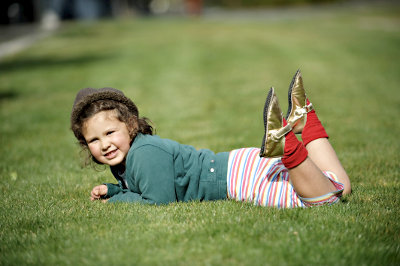
In a recent blog post about Barefoot Pioneers, we recognized some of the people who stood up against popular opinion to show the world the benefits of natural foot function and the dangers of restrictive, inhibiting shoes. One of the pioneers we mentioned, Dr. Simon J. Wikler, seems to be lesser known than the rest. We thought he deserved a little more attention, especially for the contribution he made to curing and preventing foot health problems in children.
In 1933, Wikler graduated from Temple University School of Chiropody (now known as podiatry) and became a foot specialist. At that time, the practice of treating foot injuries focused on paring corns and callouses, padding sore feet and prescribing arch supports. Wikler stood out from his fellow chiropodists when he sought the source of foot injuries with the hope of curing them rather than just treating the symptoms. The attitude of his peers was summed up by one of his colleagues, an older physician who told him "Foot troubles are chronic conditions people have had for a long time… You'll waste your time trying to find their cause and cure."
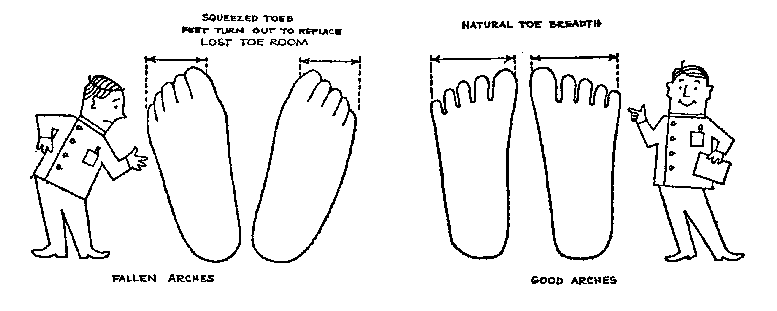
Wikler's illustrations of unhealthy feet vs. healthy feet.
Despite this attitude, Wikler persisted with his research into the 1940s and 1950s, which involved interviewing thousands of people and studying a variety of cultures to compare foot health and habits that affect it. He considered existing theories that static electricity, water and sleeping with toes facing north could lead to healthy feet. The answer finally came to him through one of his patients, a two-and-a-half-year-old boy. The boy's feet were so wide that even the widest commercially-available shoes his parents could find would not allow his toes to spread. The boy suffered from fallen arches, walked awkwardly, tired frequently and fell often.
On his journeys abroad, Wikler met many people with strong, healthy feet who routinely walked and worked barefoot. He began to wonder if there could be a connection and advised the boy's mother to let the child go without shoes for the next few months. She agreed, and Wikler kept the boy under close observation to see the effects. The results amazed him:
"Going barefoot had made this boy's toe area broader and stronger. When he stood, his stronger toes were now able to spread out, giving him a broad forward area on which to support his weight. Now he used his toes in standing and walking—he would even stand on his toes frequently while playing. His fallen arches were cured. With better foot balance, he rarely fell. He no longer begged to be carried, and he seemed tireless in his activities."
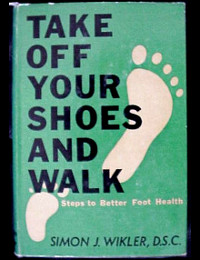
Wikler ran with this new theory and spent the next ten years examining thousands of feet and performing tests in accredited hospitals. The results of his labor led him to this conclusion: "THE MAJOR CAUSE OF FOOT TROUBLE IS THE TYPE OF SHOES WE WEAR."
In 1961, Wikler published his findings in Take Off Your Shoes and Walk. The book explained his research, documented the history of how unhealthy footwear became prevalent in our society and provided extensive advice on how foot pain can be prevented and treated with less constrictive footwear or bare feet. The book focused primarily on developing children's feet and gave hope to many parents who saw their kids walking in pain. Wikler's recommendations are modified for various age groups from infants and toddlers to older walkers. These early ages, he believed, are when children are most vulnerable to foot deformities from inappropriate footwear, and also the best time to correct and prevent injury.
Here is some of Wiklers advice for children:
- "Shoes that are flexible, roomy, and simply made are best. Remember, children's toes and feet must be allowed to grow naturally without restrictions and pressures."
- "For infants, shoes without raised heels are the most desirable."
- "Any shoes with arch support features are to be avoided."
- "Occasionally one finds the old-style cowboy-boot-type shoes with their pointed toes. Do not under any circumstances purchase these."
- "Going barefoot is a 'must' for young children"
All of these beliefs contradicted the views held by both doctors and the footwear industry of his day, and Wikler admitted often that finding healthy footwear for children in the 1960s was extremely challenging.
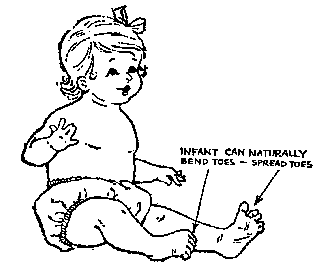
Fortunately for us, Wikler's beliefs are now commonplace. Although there are still many companies making rigid, constricting footwear for children, it is not difficult to find options for thin and flexible shoes. The idea that minimal shoes are best for kids has been popular for decades (Soft Star has been doing it since 1984), long before the barefoot running movement of the past few years, and this is largely the result of Wikler's work and his willingness to dissent against popular opinion.
Sadly, Take Off Your Shoes and Walk has long been out of print, but you can read very thorough fair-use excerpts of it at unshod.org.

Martin is a lifelong runner who began wearing minimalist shoes over 10 years ago when he found they alleviated his chronic foot pain, which eventually disappeared completely. He further studied proper running form through a series of workshops taught by Correct Toes inventor, Dr. Ray McClanahan DPM. Martin has collaborated with several health care professionals to collect and share peer-reviewed studies that show the benefits of minimalist footwear. In his personal life, Martin loves living in the Pacific Northwest because it allows him to enjoy a variety of outdoor activities year-round, including hiking, cycling, rock climbing, surfing and snowboarding.

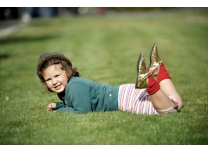

...
lol